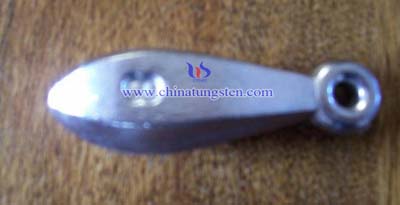What is Tungsten Carbide?
- Details
- Category: Tungsten Information
- Published on Wednesday, 10 September 2014 15:02
- Written by jwy
- Hits: 522
Tel.: 86 592 5129696; Fax: 86 592 5129797
Email: sales@chinatungsten.com
Tungsten & Molybdenum Information Bank: http://i.chinatungsten.com
Tungsten News & Tungsten Prices, 3G Version: http://3g.chinatungsten.com
Molybdenum News & Molybdenum Price: http://news.molybdenum.com.cn
Tungsten Carbide Powder Typical Applications
- Details
- Category: Tungsten Information
- Published on Wednesday, 10 September 2014 14:54
- Written by jwy
- Hits: 580
Tel.: 86 592 5129696; Fax: 86 592 5129797
Email: sales@chinatungsten.com
Tungsten & Molybdenum Information Bank: http://i.chinatungsten.com
Tungsten News & Tungsten Prices, 3G Version: http://3g.chinatungsten.com
Molybdenum News & Molybdenum Price: http://news.molybdenum.com.cn
Tungsten Bank Fishing Sinkers
- Details
- Category: Tungsten Information
- Published on Wednesday, 10 September 2014 08:51
- Written by Sherry
- Hits: 525
Tungsten bank fishing sinkers also known as reef sinkers resemble seeding leaves or egg fishing sinkers but the bank sinkers do not have a brass loop to hold the line. The bank reef fishing sinkers have a lead-mold eye, just like peduncle of seeding leaves.
These seeding leaves-shaped and tapered-shaped sinkers feature for hexagon sides other than smooth round surface, and the flat sides of the bank fishing sinkers contribute to preventing the sinkers from rolling in current and the tapered shape prevent the fishing sinkers from snagging in rocks.
Tungsten bank fishing sinkersare widely used in the past and of course it is commonly adopted by many anglers now as it works well and its bulbous shape prevents it from hanging up on the rocks.
Tungsten alloy is widely used to be the materials for fishing sinkers, contributing its environment friendly which the traditional material lead can not reach. What is more, it’s the good corrosion resistance property which makes the tungsten bank fishing sinkers more widely used.

Tungsten Alloy Manufacturer & Supplier: Chinatungsten Online - http://www.tungsten-alloy.com
Tel.: 86 592 5129696; Fax: 86 592 5129797
Email: sales@chinatungsten.com
Tungsten News & Tungsten Prices, 3G Version: http://3g.chinatungsten.com
Tungsten News & Tungsten Prices, WML Version: http://m.chinatungsten.com
What Are the Different Types of Tungsten Wire?
- Details
- Category: Tungsten Information
- Published on Wednesday, 10 September 2014 10:22
- Written by jwy
- Hits: 514
Tel.: 86 592 5129696; Fax: 86 592 5129797
Email: sales@chinatungsten.com
Tungsten & Molybdenum Information Bank: http://i.chinatungsten.com
Tungsten News & Tungsten Prices, 3G Version: http://3g.chinatungsten.com
Molybdenum News & Molybdenum Price: http://news.molybdenum.com.cn
Tungsten’s Military Applications
- Details
- Category: Tungsten Information
- Published on Wednesday, 10 September 2014 08:47
- Written by yewq
- Hits: 513
Tungsten, in military applications, is used as a hardening agent to produce armor penetrating rounds in bullets,. It is also used for fragmentation to create a devastating effect as its hardness remains intact as it shreds through targets. Tungsten is also used in cube and ball form in anti-personnel ordnance, ranging from grenades, to mines and rockets, these added tungsten cubes and balls are highly destructive due to their retention of their hard features, solid shapes as they impact. Tungsten alloys are also used in defensive plating, due to their hardness and strength. Tungsten carbide and other alloys are also used to make penetrators for weaponry, to enhance their effectiveness.
Another widely used application of tungsten in defense is the various weighting applications used in helicopters and other aircraft and armored vehicles. Helicopters use this tungsten to weight their rotors, noses, and skids. Tungsten alloys is widely used in these applications because of its hardness and size to weight ratio it is a perfect material for weighting and protection.
Companies around the world are also using tungsten in their production of military ammunitions, due to its environmentally friendly composition, as compared to lead, which has been proven in several ways to be increasingly destructive of the environment. Tungsten carbide, and other alloys have all been proven to be “clean” metals, which makes them an ideal choice internationally as we move towards grTungsten’s Military Applications
eener technologies.
Tungsten Alloy Manufacturer & Supplier: Chinatungsten Online - http://www.tungsten-alloy.com
Tel.: 86 592 5129696; Fax: 86 592 5129797
Email: sales@chinatungsten.com
Tungsten & Molybdenum Information Bank: http://i.chinatungsten.com
Tungsten News & Tungsten Prices, 3G Version: http://3g.chinatungsten.com
Molybdenum News & Molybdenum Price: http://news.molybdenum.com.cn





 sales@chinatungsten.com
sales@chinatungsten.com